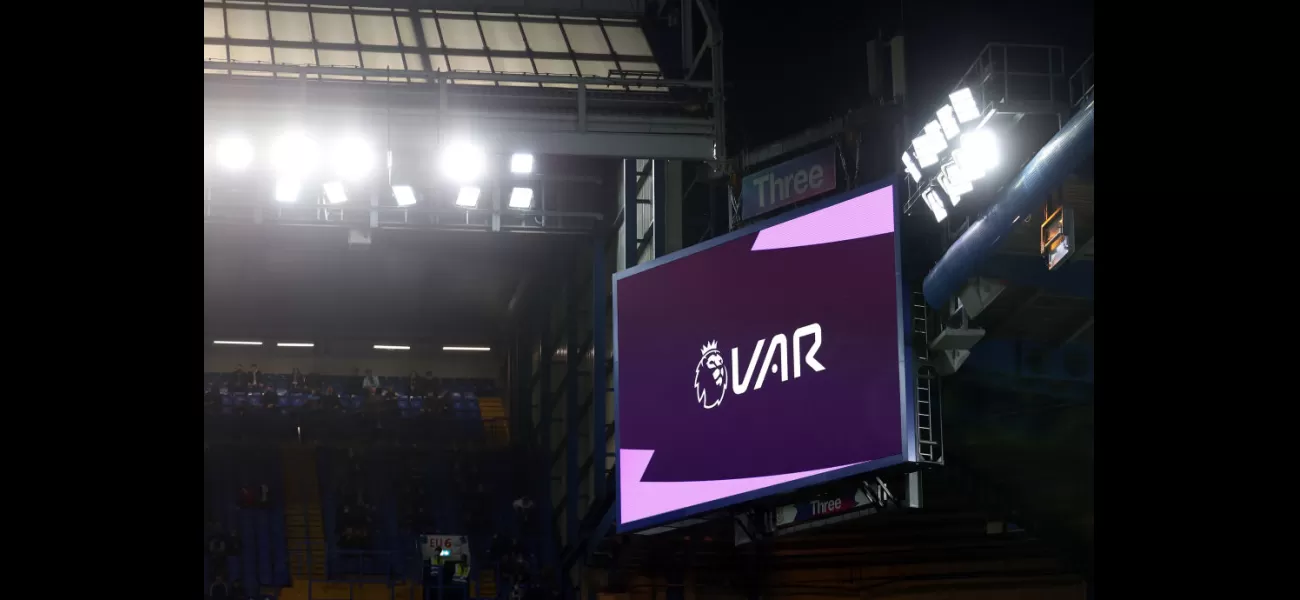Learn about VAR in football - its purpose, mechanics, and application - in this comprehensive guide.
"Complete tech guide at your fingertips."
April 28th 2024.

Video Assistant Referee, commonly known as VAR, has become a regular part of football nowadays. It has been used in the game for quite a few years now, but its complex nature still leaves many fans with more questions than answers. Whether you love it or hate it, VAR is here to stay and is being used in all Premier League, Champions League, and World Cup matches.
For those who are still puzzled by how this technology works, or simply need a refresher, here is a comprehensive guide to everything you need to know about VAR. First and foremost, VAR stands for Video Assistant Referee. In each game, there is one VAR, who is usually a current or former referee, along with an assistant and a replay operator. They work together as a team, analyzing all angles of the match through the available cameras in the stadium. The VAR team is located in a separate room, away from the stadium, such as Stockley Park in west London for Premier League matches.
VAR often becomes the center of controversy during games, but there are specific situations in which it can be used. These include goals and offenses leading up to a goal, penalty decisions and offenses leading up to a penalty, direct red card incidents, and mistaken identity. However, fouls outside of the penalty box will not be reviewed unless they are worthy of a direct red card or are related to a penalty decision or goal.
Now, who calls for VAR? It can be either the referee or the VAR. The referee can inform the VAR that a decision should be reviewed, or the VAR can recommend to the referee to take a look. However, the VAR's role is only advisory and supportive, and the referee has the final say, even if the VAR suggests otherwise. Additionally, if there is no clear and obvious error in the original decision, VAR cannot overrule the referee.
So, what happens when a decision is being reviewed? The VAR team watches the incident on video footage and communicates their findings to the referee through an earpiece. The referee can then confirm this by pointing to his ear to delay the game's restart or by making the official VAR review signal, indicating that play has been stopped for a decision to be reviewed. The referee can either watch the video of the incident on the side of the field or simply accept the VAR's information and take appropriate action.
It is worth noting that checks are continuously being carried out throughout the game, but when a decision is formally being reviewed, a graphic appears on the screen for TV viewers, and messages are displayed on the stadium screens for those attending the match. The referee will use the monitor at the side of the pitch for issues of interpretation, such as goals, fouls committed by attacking players, offside interference, penalty decisions, and all direct red card incidents. However, for situations like goals scored from an offside position or a ball out of play, the referee will simply accept the information from the VAR and take appropriate action.
Lastly, what happens if an incident occurs while a decision is being reviewed? Ideally, decisions should be reviewed as soon as they happen, but if the referee misses a red card offense, play continues, and a goal is scored, the VAR can still alert the referee, and the play is brought back to the foul. If the team that was fouled goes on to score, the red card can still be given, but the goal will still stand. What are your thoughts on VAR? Share them in the comments below.
For those who are still puzzled by how this technology works, or simply need a refresher, here is a comprehensive guide to everything you need to know about VAR. First and foremost, VAR stands for Video Assistant Referee. In each game, there is one VAR, who is usually a current or former referee, along with an assistant and a replay operator. They work together as a team, analyzing all angles of the match through the available cameras in the stadium. The VAR team is located in a separate room, away from the stadium, such as Stockley Park in west London for Premier League matches.
VAR often becomes the center of controversy during games, but there are specific situations in which it can be used. These include goals and offenses leading up to a goal, penalty decisions and offenses leading up to a penalty, direct red card incidents, and mistaken identity. However, fouls outside of the penalty box will not be reviewed unless they are worthy of a direct red card or are related to a penalty decision or goal.
Now, who calls for VAR? It can be either the referee or the VAR. The referee can inform the VAR that a decision should be reviewed, or the VAR can recommend to the referee to take a look. However, the VAR's role is only advisory and supportive, and the referee has the final say, even if the VAR suggests otherwise. Additionally, if there is no clear and obvious error in the original decision, VAR cannot overrule the referee.
So, what happens when a decision is being reviewed? The VAR team watches the incident on video footage and communicates their findings to the referee through an earpiece. The referee can then confirm this by pointing to his ear to delay the game's restart or by making the official VAR review signal, indicating that play has been stopped for a decision to be reviewed. The referee can either watch the video of the incident on the side of the field or simply accept the VAR's information and take appropriate action.
It is worth noting that checks are continuously being carried out throughout the game, but when a decision is formally being reviewed, a graphic appears on the screen for TV viewers, and messages are displayed on the stadium screens for those attending the match. The referee will use the monitor at the side of the pitch for issues of interpretation, such as goals, fouls committed by attacking players, offside interference, penalty decisions, and all direct red card incidents. However, for situations like goals scored from an offside position or a ball out of play, the referee will simply accept the information from the VAR and take appropriate action.
Lastly, what happens if an incident occurs while a decision is being reviewed? Ideally, decisions should be reviewed as soon as they happen, but if the referee misses a red card offense, play continues, and a goal is scored, the VAR can still alert the referee, and the play is brought back to the foul. If the team that was fouled goes on to score, the red card can still be given, but the goal will still stand. What are your thoughts on VAR? Share them in the comments below.
[This article has been trending online recently and has been generated with AI. Your feed is customized.]
[Generative AI is experimental.]
0
0
Submit Comment





